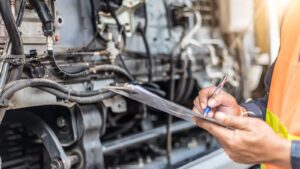Buildings have evolved from being small huts to large complicated service functioning buildings during the past decades. Nowadays, a large scale building consists of highly complicated integrated systems due to the high demand for various services such as electrical, plumbing, intercommunication, security, fire protection and ventilation. Industrial fan systems are one of the most demanded services required for a large scale building nowadays. Industrial fan systems help a lot to maintain proper air temperature inside the building. Moreover, they are used to provide adequate ventilation needed for a building due to various reasons such as high heat generation, toxic gas emission and ventilation. However, with the emergence of IIoT, the manoeuvring of an industrial fan has revolutionised.
In recent years, the usage of industrial fan systems has increased by a significant amount due to their various applications. However, with the rapid development in industrial fan systems, professionals are seeking more ways to make industrial fan systems management effective and efficient. The traditional methods of industrial air systems management need to be updated and optimised to reduce the operational and maintenance costs while achieving the best performance from those industrial fan systems.
Challenges In Managing Industrial Fan Systems
When it comes to large scale buildings, its industrial air management system is highly complicated because of its large number of components and inability to access some of the critical areas of the industrial fan systems. Moreover, it is hard to receive real-time updates about the performance of those fans and other components, making it difficult to observe and analyse the performance of those fan systems. Maintaining a team to observe and analyse the performance needs time, cost and expert knowledge, which acts as a disadvantage.
Especially when it comes to large, complicated industrial air management systems, fan systems are expected to operate quickly in collaboration with other services such as electrical power supply systems and fire protection systems. However, due to the usage of traditional operating methods of such systems, the respective owners or the clients of those buildings are unable to enjoy the best performance from those industrial fan systems. Furthermore, traditional fan systems are unable to meet sustainable energy standards most of the time due to their slow response in emergencies and their high power consumption. This is why forward-thinking industrial fan managers rely on digital technologies that are reforming the industrial practices under the guise of the well known ‘industry 4.0’ demands.
Industry 4.0 for Industrial Fan Management
Information and communication technology is playing a major role when it comes to digitising outdated traditional services in a building. Industrial fan systems are also being converted with digital technologies- like AI, IoT, Smart and Self-serving Analytics, Edge computing, cloud technology and more- where the quality and the standards of those fan systems are improved to a greater extent.
Digital technologies have the potential to improve the efficiency of the industrial fan systems while making their operational and maintenance stages more user friendly for the professionals. The collaboration between several services inside a building is made easy by digitally powered industrial fan systems where those systems can operate and respond quickly during an emergency. The fast response time is highly essential for a smartly managing building with the latest service technologies. The ability to integrate with other services is highly beneficial for the client or the owner to reduce the overall operational and maintenance costs of the service.
Amplify Your Fan’s Performance With Digital Technologies
In an era of digitally controlled devices, equipment and service components, industrial fans are also being converted into smart devices with smart features helping various clients to achieve more remarkable outcomes. Though industrial fan systems are managed using traditional methods with the development of information and communication technology, it has been easy to control those devices digitally.
The new features which come along with the digitally powered industrial fan systems are helpful in assessing the power consumption, reducing overloading, proper maintenance and quick operation during an emergency. Powering industrial fan systems with digital technologies allows operators to have a user-friendly operation environment while enjoying user-friendly interfaces and features. The most significant advantage of empowering industrial fan systems with digital technology is the ability to integrate the fan systems with other services easily.
The properly coordinated service integration allows a seamless service operation within the building while ensuring ultimate user satisfaction. Both the owners and the building users can enjoy a very well maintained airflow and air temperature inside the building while ensuring a high level of fire protection for its users. Finally, it helps to control buildings seamlessly to achieve highly reduced life cycle costs.







